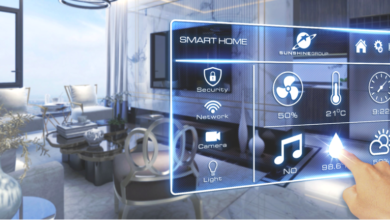Automating Your Home: A DIY Guide to IoT Automation In 2024

Automating Your Home: A DIY Guide to IoT Automation In 2024? The world is becoming increasingly connected, and the Internet of Things (IoT) is at the forefront of this transformation. In 2024, home automation has become more accessible than ever, allowing homeowners to enhance their living spaces with the power of technology. This DIY guide will walk you through the process of automating your home, making it smarter and more efficient.
Table of Contents
ToggleIntroduction
In today’s fast-paced world, the demand for convenience and efficiency is higher than ever. Home automation, powered by IoT, has emerged as a solution to address these needs. In 2024, the possibilities are endless, and turning your home into a smart haven is easier than you think.
Understanding IoT Automation
Before diving into the nitty-gritty of home automation, it’s crucial to understand what IoT and automation entail. The Internet of Things refers to the network of interconnected devices that communicate and share data. Automation, in this context, involves these devices working together seamlessly to perform tasks, simplifying your daily life.
Benefits of Home Automation
The benefits of home automation are multifaceted. From increased efficiency and convenience to energy and cost savings, embracing IoT in your home can transform the way you live. Enhanced security features also contribute to the appeal of home automation, providing peace of mind to homeowners.
DIY Approach to IoT Automation
Embarking on the journey of automating your home doesn’t have to be daunting. Taking a DIY approach allows you to tailor the automation to your specific needs and budget. Begin by assessing your home automation needs and researching compatible devices that align with your lifestyle.
Smart Devices for Home Automation
Smart lighting systems, thermostats, and security cameras are just a few examples of devices that can elevate your home’s intelligence. Choosing devices that seamlessly integrate and are compatible with your chosen smart hub is crucial for a smooth automation experience.
Setting Up a Smart Hub
A central control unit, or smart hub, serves as the brain of your home automation system. Selecting the right smart hub for your setup ensures compatibility and a centralized point of control for all your devices.
Creating Automation Scenarios
The true power of home automation lies in the ability to program routines for daily tasks. Imagine waking up to a house that adjusts its lighting and temperature based on your preferences. Integrating devices to work together seamlessly is key to achieving these automated scenarios.
Read More: Smart Agriculture: A Farmer’s Guide to IoT Solutions In 2024
Voice Control Integration
Adding voice control to your home automation setup brings a futuristic touch. Voice-activated assistants, such as Amazon Alexa or Google Assistant, can be integrated to execute commands, making interaction with your smart home more intuitive.
Ensuring Security in IoT Automation
As the number of connected devices increases, so does the importance of securing your smart home. Implementing best practices for securing devices and staying vigilant with updates helps mitigate potential risks.
Troubleshooting Common Issues
Despite the advancements in technology, occasional issues may arise. Connectivity problems and outdated firmware can disrupt your smart home experience. Familiarize yourself with troubleshooting techniques to address these common issues effectively.
Future Trends in Home Automation
The world of home automation is ever-evolving, with ongoing advancements in AI and machine learning. Stay informed about emerging technologies that may further enhance your home automation experience in the future.
Challenges and Considerations
While the benefits of home automation are vast, it’s essential to be aware of potential challenges. Privacy concerns and security risks should be addressed proactively to ensure a safe and secure smart home environment.
Case Studies and Success Stories
Real-world examples of successful home automation implementations provide valuable insights. Learn from the experiences of other homeowners, understanding what worked well and any challenges they overcame.
Community and Online Resources
Joining forums, blogs, and social media groups dedicated to home automation allows you to connect with like-minded individuals. Share your experiences, seek advice, and troubleshoot issues collaboratively with the wider home automation community.
Conclusion
In conclusion, automating your home in 2024 is not just a technological luxury but a practical way to enhance your daily life. Embrace the convenience, efficiency, and security that IoT automation offers. As technology continues to advance, the possibilities for creating a smarter home are limitless
FAQs : DIY Guide to IoT Automation
Is home automation suitable for every house?
Home automation can be adapted to various homes, but the extent of automation depends on individual preferences, needs, and the structure of the house.
How difficult is it to set up a smart hub for home automation?
Setting up a smart hub is generally straightforward, and many devices come with user-friendly interfaces. However, it’s essential to choose a hub compatible with your devices for seamless integration.
Are there privacy concerns with home automation?
While home automation enhances convenience, users should be mindful of privacy. Ensure that devices are secured, and follow best practices to protect personal information.
Can I integrate voice control into an existing home automation setup?
Yes, many smart devices support voice control integration. Check the compatibility of your devices with popular voice-activated assistants to enhance your automation experience.
What should I do if I encounter connectivity issues with my smart devices?
Troubleshoot connectivity problems by checking Wi-Fi settings, ensuring devices are within range, and updating firmware. Consult device manuals or online forums for specific solutions.











